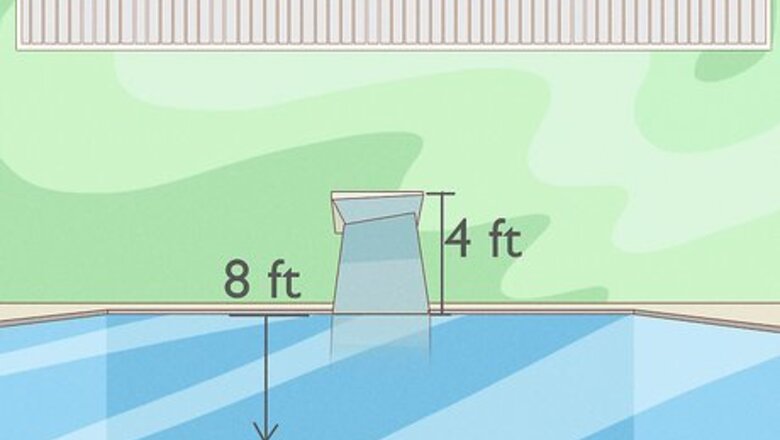
views
X
Research source
It’s perfectly okay to feel a little nervous before taking your first big plunge—to ease your worries, consider practicing near a lifeguard or experienced swimmer. With a little bit of practice, you can really make a splash the next time you go swimming!
Practicing Diving Basics

Check that the water is deep enough. Diving is a fun way to enter the water, but you don’t want to put your safety at risk. Look for signs or labeling that mention how deep the water is before you jump in. Ideally, the water should be twice as deep as the diving distance between the board and the water. For instance, if the diving board is 4 ft (120 cm) above the water, the water would need to be at least 8 ft (240 cm) deep.
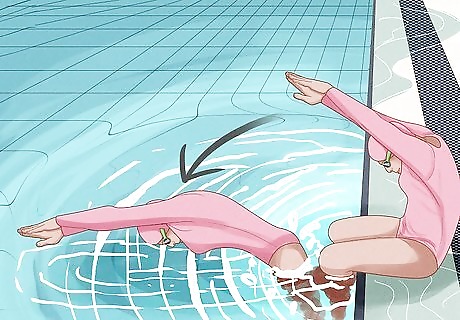
Sit on the edge of the pool and practice diving in. Sit along the edge of the water, letting your feet touch the edge of the pool wall. Lift your arms straight up, keeping your hands close together. Slowly lean forward, pressing your feet against the wall as you approach the water. Give yourself some momentum by pushing with your feet, and guiding your hands and arms into the water first. You’ll need to be at a swimming pool to do this. This is a great trick to try if you’ve never taken a dive before.
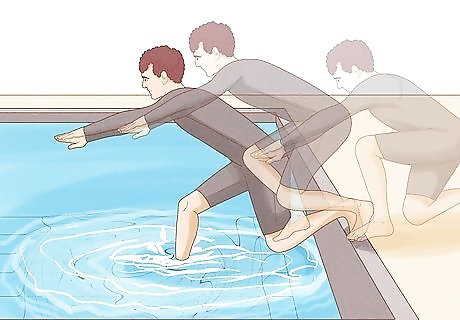
Transition to a kneeling dive so you really get the movements down. Stand really close to the pool’s edge, so it’ll be easy to dive in. Arrange your dominant foot along the edge of the pool, and extend your opposite leg behind you. Bring your arms straight up, lowering your head as you get into position. Start off your dive by leaning forwards the pool, and then push off with your dominant foot. It can be a bit tricky to hone your form, but try to dive into the pool arms-first. When getting into position, remember to tuck your chin. That is one of the biggest mistakes beginners make, and not tucking the chin can make you more likely to belly flop when diving.

Jump feet-first into the water to perform a pencil dive. Pencil dives are a great way to get comfortable with the idea of a standing dive. Simply stand at the water’s edge, then jump in feet-first. Repeat this dive as much as you need so you feel a bit more adjusted when it comes to diving.
Basic Standing Dive

Stand with your toes curled over the edge of the pool or diving block. Place your feet along the very edge of the pool, so it’ll be easy for you to launch yourself into the water. Keep your toes curled around the edge of your diving area, whether it’s a diving block or the edge of a pool. If you’re standing on a diving block, place your hands next to your feet, so it’s easy to launch yourself off.
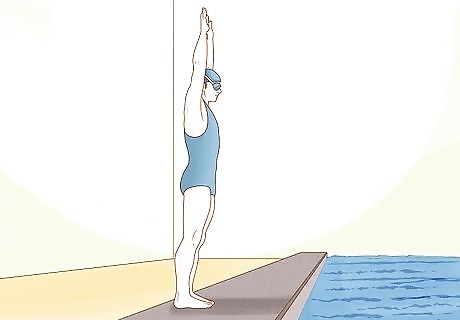
Extend your arms over your head with your hands together. Lift both your arms up and over your head, which will make your dive a lot more smooth and fluid. Stack your hands together so your arms form a point, which will help you enter the water as you dive. Proper arm technique can save you from a belly flop! Make sure your fingers are straight and are the first parts of your body to touch the water.
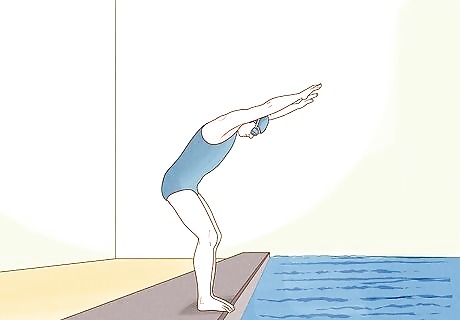
Form a good diving stance by bending your hips and knees. Lean forward with your hips, so your head, arms, and abdomen form a 45-degree angle. To give yourself more momentum, bend your knees at a 120-degree angle. Don’t get too caught up in the numbers—what matters most is that you’re leaning forward and ready to enter the water.
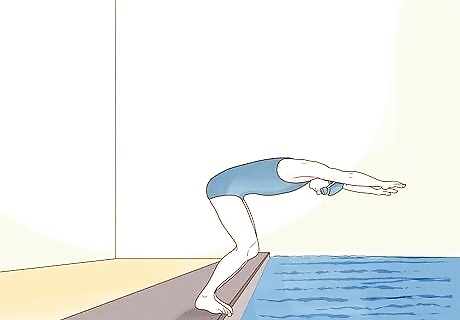
Lean your weight forward to initiate the dive. A good dive is a bit like the domino effect; before you can hit the water, you need to build up some good momentum. With your arms still held over your head, start pushing your weight forward so you’re slowly falling towards the water. This can feel a little unnerving at first. Don’t worry—it’s all part of the process!
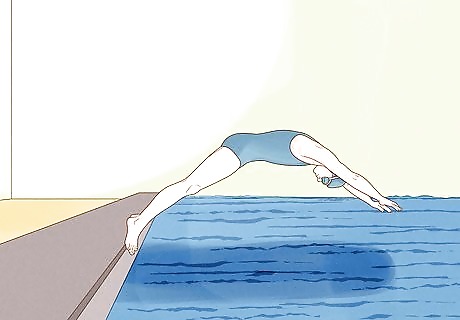
Push off with your feet to launch yourself into the air. As you lean forward, wait for gravity to take control as you head towards the water. When your head and chest are about horizontal with the water, push off the edge of your diving area with both feet. Feel yourself launch into the air a bit, while your arms continue to point towards the water. It’ll probably take a few tries before you get this motion down. Just keep at it!
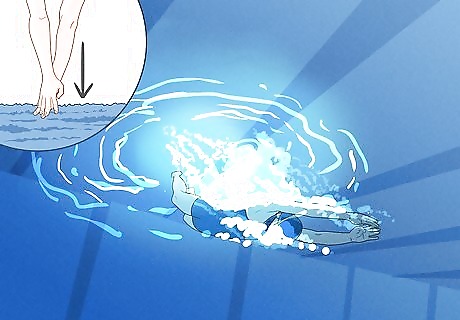
Glide into the water with your pointed arms. Keep your arms pointed forward and your hands together, which will help you best enter the water. Push your arms into the water first while keeping your head down, entering the water at around a 45-degree angle as you go. It may help to visualize a ring or hoop as you enter the water—as you dive, do your best not to touch the edges of this imaginary hoop. If you envision a “hoop,” pretend that it’s roughly the size of a traditional hula hoop.
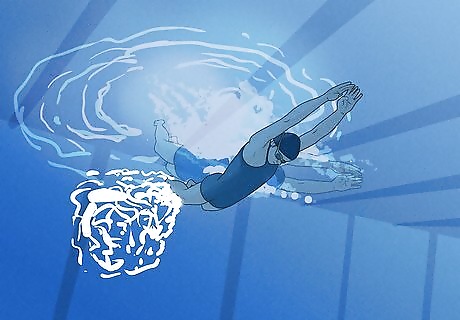
Guide the rest of your body into the water in a fluid motion. Follow through with the dive, entering the water at an angle as you. Try to use your momentum to enter the water in a fluid, angled motion, instead of landing on your stomach. Don’t be discouraged if your form isn’t perfect at first—it may take several tries before you really get the hang of it!
Conquering the Springboard

Swing your arms behind you as you approach the end of the board. Step onto the springboard and approach the end. You may feel a bit wobbly at first, so pull your arms behind you to help you stay balanced as you prepare to dive. You only need to keep your arms behind you as you approach the end of the board. Always walk along the board instead of running.
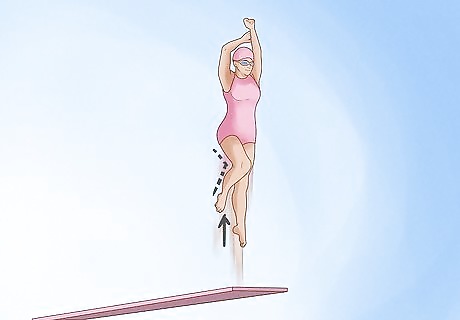
Lift both arms and 1 knee up as you jump once. Begin your dive by nailing your form along the end of the diving board. Jump up once in the air, driving 1 knee upwards as you lift both arms in the air. Lifting your knee helps to keep your form solid, and may give your dive more momentum. You’ll jump 2 times total before diving in.
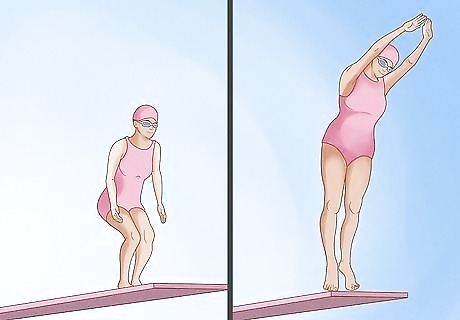
Jump up off the springboard when the board starts bending upwards. Keep an eye on the springboard below you as you prepare to jump for a second time. Wait a second or so for the springboard to start lifting upwards, following the previous momentum of your previous jump. Do your best to jump off from the end of the board, so you don’t worry about hitting the board in the process. Continue holding your arms above your head as you jump again.
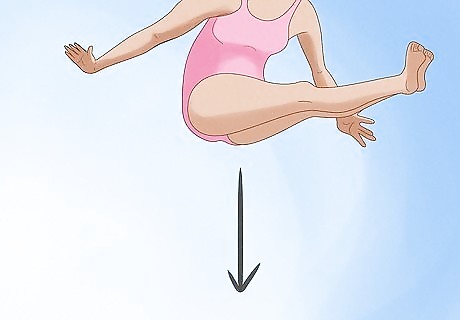
Dive into the water with your hips first. Keep your waist bent, and direct your arms in a downward angle towards the water. Try not to move around too much during the dive, so you can enter the water smoothly and fluidly. Like in a traditional dive, aim for your arms to enter the water first, followed by the rest of your body.













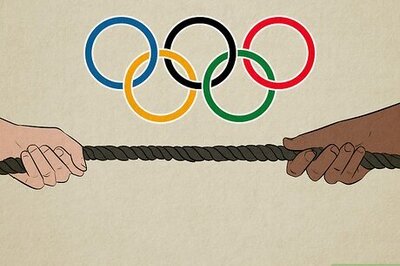






Comments
0 comment